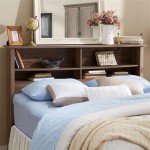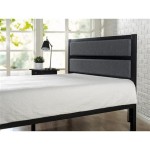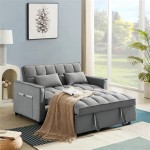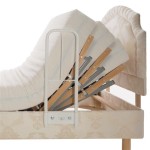DIY Queen Size Loft Bed Plans
Building a queen-size loft bed offers a practical solution for maximizing space, particularly in smaller homes or apartments. A loft bed elevates the sleeping area, freeing up valuable floor space underneath for a desk, seating area, or storage. This article explores key considerations and provides a general overview of the process involved in building a DIY queen-size loft bed.
Before embarking on the project, careful planning is crucial. Determining the desired height of the loft bed is the first step. This depends on the intended use of the space below and the ceiling height of the room. Accurate measurements are essential for ensuring adequate headroom both above and below the loft.
Selecting appropriate materials is paramount for safety and stability. High-quality lumber, such as kiln-dried pine or fir, is recommended for the frame. The dimensions of the lumber will depend on the design and weight capacity requirements. Hardware, including screws, bolts, and brackets, should be heavy-duty and designed for structural applications. Consulting building codes and load-bearing capacities is advisable before making material purchases.
Choosing a design that suits individual needs and skill level is essential. Numerous free and paid plans are available online and in woodworking publications. Simple designs utilize basic rectangular frames, while more complex plans incorporate features like built-in desks, drawers, or shelving. Carefully reviewing the plans and understanding the construction process before commencing the build is vital.
Once the design and materials are finalized, the building process can begin. Cutting the lumber to the specified dimensions is the first step. Precision is critical to ensure a square and stable frame. A miter saw or circular saw with a guide provides the most accurate cuts. Sanding all cut edges smooths the surfaces and enhances the finished appearance.
Assembling the frame requires careful attention to detail. Following the chosen plan precisely ensures structural integrity. Using wood glue and appropriate screws or bolts reinforces the joints for added strength and stability. Clamps hold the pieces in place while the glue dries and the fasteners are secured.
Supporting the loft bed requires robust structural elements. Depending on the design, this may involve vertical posts, angled supports, or a combination of both. Ensuring these supports are securely attached to the frame and anchored to the wall, if necessary, is crucial for safety. Reinforcing the frame with additional bracing can further enhance stability.
Constructing the bed platform involves creating a sturdy base to support the mattress. This typically consists of a frame made of lumber and plywood or closely spaced slats. Ensuring the platform is securely attached to the frame is essential. Adding a guardrail around the perimeter of the loft bed enhances safety, especially for children or restless sleepers. The height and design of the guardrail should comply with safety regulations.
Finishing the loft bed involves sanding all surfaces smooth and applying a protective finish. This could include paint, stain, or a clear sealant. The choice of finish depends on personal preference and the desired aesthetic. Applying multiple coats provides enhanced durability and protection.
Access to the loft bed requires a safe and sturdy ladder or staircase. The design and placement of the access point should be carefully considered during the planning phase. Building a ladder can be incorporated into the overall design, or a pre-made ladder can be purchased and attached securely. Ensuring the ladder or staircase is firmly attached to the frame is crucial for safety.
Adding finishing touches and customizing the space below the loft bed allows for personalized functionality. This might include installing shelves, a desk, drawers, or creating a cozy seating area. The options are limited only by individual creativity and the available space. Careful planning and execution can transform the area under the loft bed into a highly functional and aesthetically pleasing space.
Regularly inspecting the loft bed for any signs of wear and tear is an important safety precaution. Tightening loose screws or bolts, reinforcing joints, and addressing any structural issues promptly ensures the long-term stability and safety of the structure. Proper maintenance can significantly extend the lifespan of the loft bed.
While building a DIY queen-size loft bed can be a rewarding project, it's essential to acknowledge that woodworking experience and access to appropriate tools are necessary for a successful outcome. If lacking the necessary skills or tools, seeking professional assistance or considering a pre-fabricated option is recommended.

How To Build An Easy Diy Queen Size Loft Bed For S Thediyplan

How To Build An Easy Diy Queen Size Loft Bed For S Thediyplan

How To Build A Diy Queen Size Loft Bed With Desk Thediyplan

Queen Loft Bed Plans

Free Diy Furniture Plans How To Build A Queen Sized Low Loft Bunk Bed The Design Confidential

Loft Frame Simple Plans Available From Their Site Bed Queen Beds

How To Build A Diy Queen Size Loft Bed With Desk Thediyplan

Diy Full Size Loft Bed For S With Plans To Build Your Own Simplified Building

Diy Loft Bed How To Build Fixthisbuildthat

Diy Queen Loft Bed Frame Plans Rannels Rustic Log Beds Build A
Related Posts







